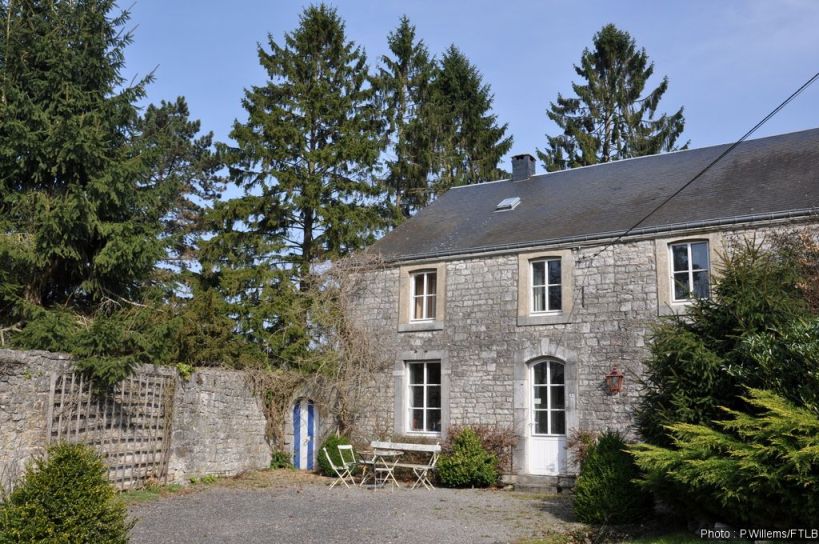



The picturesque village of Humain
The village of Humain, with its hilly landscape, stretches out on a nothern slope of the Calestienne, and is surrounded by the Gerny plateau, a fertile plain that offers a variety of beautiful landscapes, that differ through the seasons. From the Gerny you can enjoy breathtaking, scenic views of the Famenne plains, but also on the Ardennes foothills and their deep, mystery-laden forests...
The village (that is part of the council of Marche) boasts many beautiful houses as well as many U-shaped or elongated farmhouses from the 18th and 19th century in Belgian bluestone, as well as a the beautiful Monks' Farm, which dates back to the 17th century.
Unusual antennae...
The landscape that unfolds in front of you provides you with a strange sight: bang in the middle of the verdant fields stands a group of satellite dishes which are used to study variations in solar activity....
Up to 2009, the station was frequently visited by the World War II enthusiasts. Why? Well, it used to house an original Würzburg radar...
Chief Inspector Maigret and the Castle of Humain...
This castle was built in 1756 on request of Charles-Antoine de Rossious, Lord of Humain. It is surrounded by a vast park with ponds. The entrance of the domain is marked by two 19th century pilasters topped with vases.
This U-shaped castle is composed of several wings: the main building, divided in three by rows of pilasters, and lower outbuildings that are also from the 18th century. The park boasts a small 18th century observation tower from which you can enjoy a beautiful view of the ponds and the whole valley.
In the 90's, the castle was used to film an episode of the popular television show “Chief Inspector Maigret”.
Did you know that?
The main resource of the village of Humain may well have been agriculture; marble mining was nonetheless an equally important economic factor thanks to the extension of the pink marble quarry that opened in 1732. The Saint-Hubert abbey ran the Saint-Martin quarry (on the road between Aye and Humain) until 1760. The marble was chiefly used to decorate the Saint-Hubert church and abbey.The quarry was abandoned in 1975.
